- Home
- Neal Stephenson
Atmosphæra Incognita
Atmosphæra Incognita Read online
Atmosphæra Incognita
Copyright © 2013 by Neal Stephenson.
All rights reserved.
Dust jacket and interior illustrations
Copyright © 2019 by Patrick Arrasmith.
All rights reserved.
Print version interior design Copyright © 2019
by Desert Isle Design, LLC.
All rights reserved.
Electronic Edition
ISBN
978-1-59606-926-8
Subterranean Press
PO Box 190106
Burton, MI 48519
subterraneanpress.com
Manufactured in the United States of America
Table of Contents
Cover
Title Page
Copyright
Atmospæra Incognita
Story Notes
Structural Design
“IT’S CALLED SOIL,” I told him, for the third time.
Carl didn’t even like to be told anything twice. He drew up short. “To me,” he said, “it’s all dirt.”
“Whatever you call it,” I said, “it’s got a certain ability to hold things up.”
I could tell he was about to interrupt, so I held up a hand to stifle him. Everyone else in the room drew in a sharp breath. But none of them had known Carl since the age of five. “All I’m saying,” I said, “is that civil engineers happen to be really, really good at building things on top of dirt—” (this was me throwing him a bone) “—and so rather than begin this project—whatever the hell it is—by issuing a fatwa against dirt, maybe you should trust the engineers to find some clever way to support whatever the hell it is you want to build on top of whatever kind of soil happens to cover whatever the hell site you want me to buy.”
Carl said, “I don’t trust dirt to support a tower twenty kilometers high.”
That silenced the room. With any other client, someone might have been bold enough to raise their hand and ask if he’d really meant what he said.
Or, assuming he had, whether he was out of his mind.
No hands went up.
“Okay,” I said finally, “we’ll look for a site where bedrock is near the surface.”
“Preferably is the surface,” Carl said.
“I’m just saying that might be tricky,” I pointed out, “combined with your other requirements. What were those, again?”
“Direct access to a Great Lake,” he said. “Extra points if it has a steel mill on it.”
“What if the steel mill isn’t for sale?” someone asked.
“It will be,” I said, before Carl could.
WITH ME AND CARL it was one of those relationships where we went for a quarter of a century without having any contact at all and then picked up right where we’d left off at twelve. We’d gone to the same schools and scuffled together on the same playgrounds and even advanced as far as some exploratory kissing, which, for reasons that will shortly become self-evident, hadn’t gone very well. Then the coach of the middle-school football team had refused to let me participate, save as manager or cheerleader, and my parents had yanked me out of the place and home-schooled me for a year before sending me to a private academy. This had led to college and grad school and a long dispiriting run of un- and underemployment, since the economy didn’t seem interested in comparative religion majors. I’d moved to California with a girlfriend during a window when gay marriage was legal, but broken up with her before we could tie the knot—because something about knowing you could really focused one’s attentions on what life would be like if you did—then met Tess and married her instead. Tess was making decent money as a programmer for a series of tech firms, which left me as one of those stay-at-home spouses with nothing to pass the time except yoga. Eventually, as an alternative to simply going crazy, I had gotten into the real estate business. I was good at all parts of it except dealing with silly homeowners-to-be who couldn’t make up their minds about which house they wanted to buy.
Commercial real estate had turned out to be my ticket. Those buyers knew what they wanted and I liked such people.
People like Carl.
I’d followed his career: the cover stories in the business magazines, the photos of him opening the New York Stock Exchange. I hadn’t realized that he was Carl, the kid from the playground, until he’d become a billionaire, lost most of it, and become a billionaire a second time: exhibiting a tolerance for risk that fit in perfectly with his behavioral profile during recess.
One year I’d gone home for Christmas. My mom, busy in the kitchen, had dispatched me to the grocery store to buy cranberry relish. I found myself standing next to Carl in the checkout line. He was holding a tub of sour cream and a six-pack of beer. Just me and the eleventh-richest man in America standing there waiting for Old Lady Jones (as we had known her three decades earlier) to finish coupon sorting. Carl and I had strolled across the parking lot to the Applebee’s and spent a while catching up. I told him about my marriage. Carl just nodded as if to say, Yeah, that would be you. This created an immediate and probably stupid feeling of gratitude and loyalty that saw me through a lot of the crazy stuff that happened later.
Then some internal timer seemed to go off in his head. Maybe he sensed that the sour cream and the beer were both getting warm, or maybe that’s just how guys like Carl are hooked up. He turned into a grown-up again. Asked me what I did for a living. Asked me a lot of questions about it, then interrupted my answers when they reached the point of diminishing returns. Requested my business card.
A week later I was back in the Bay Area. Finding Carl a hangar to store his collection of restored World War I biplanes. After that it was helping one of his companies move to a new facility in Redwood Shores. Then finding an office building for his microfinancing venture.
And it was always easy between us. Even when he was impatient or downright pissed off about something, it was always Emma and Carl, twelve years old again. Even—no, especially—when he came to me with a very twelve-year-old look on his face and said, “I’ve got a weird one for you.”
“YOU WEREN’T KIDDING about the weird part,” I told him, after the engineers and bankers and lawyers and a single lonely astrophysicist had all filed out of the room.
“I was going to keep it secreter, longer,” he admitted, “but people can’t make good decisions if I don’t tell them the plan.”
“Is it a plan?” I asked. “I mean, how much of this have you figured out?”
“I’ve had civil and mechanical engineers on it for a few months,” he said, “a small team. What I haven’t figured out yet is—”
“Why it makes sense?” I prompted him.
“Ah, I knew there was a reason I hired you.”
How steel is made sounds like the title of one of those earnest educational films that Carl and I had respectively slept through and watched in fourth grade. If you’re of a certain age, you can see that film in your mind’s eye: the grainy black-and-white footage, the block-letter title cards, the triumphant soundtrack trying to blow out the tiny speakers of your classroom’s AV cart. Here I’m using it as a kind of placeholder for the first six months of my tenure in Carl’s organization. There was no point in even starting to think about building a twenty-kilometer-high steel tower until we had figured out where the steel was going to come from.
Making no pretenses to narrative coherence, here’s that six months broken down into six bullet points:
• There’s a reason most of the steel mills were around the Great Lakes. These seemed to have been designed by God to support the production of steel on a massive scale. Iron ore from northern Minnesota came together with coal from Appalachia (or, later, from Wyoming) and poured into mills dotted around the shor
es of those enormous bodies of water. To you and me, “lake” might mean “fishing and waterskiing,” but to industrialists it meant “infinitely wide superhighway for moving heavy things.”
• Most of those mills were obsolete.
• The steel industry was, in Carl’s unkind phrasing, “the Jurassic Park of the business world.” It took a long time to pay off the massive capital investment needed to build a new mill, so owners were resistant to change. Innovation tended to be forced on them by early adopters, elsewhere in the world, who had nothing to lose.
• China was kicking the crap out of us. Most of their mills were new. They produced better product: more consistent, higher quality, easier to work with. They were getting their ore from Australia and their coal domestically. They weren’t encumbered by regulations.
• None of the existing U.S. mills were making the stuff we were going to need.
• As a little side project en route to building his tower, Carl was going to have to reboot the American steel industry.
Our initial idea, which we quite fell in love with, was to plant the tower along the shore of a Great Lake and basically extrude it out the top of a brand-new steel mill. Needless to say, we got a lot of love from Chambers of Commerce in that part of the country until our structural engineers finally achieved mind-meld with some climate scientists and called us in for a little meeting.
The engineers had been getting more and more nervous about wind. It had been clear from early on that the big challenge, from a structural engineering point of view, wasn’t supporting the self-weight of the tower. The amount of steel needed to do that was trivial compared to what was needed to prevent its being knocked flat by the upper-altitude winds. Kavanaugh Hughes, our head structures guy, had an effective demo that came to be known as “I am the wind.” He would have you stand up in a normal, relaxed attitude, feet shoulder width apart, and then he would get to one side of you and start pushing. First he would get down on his hands and knees and push on your ankle as hard as he could. “Low-level winds,” he explained. No one had trouble resisting a force applied that close to the floor. Then he’d rise up to a kneeling position, place his hands on your hip bone, and push. “Note the transfer of weight,” he’d say, and he’d keep urging you to articulate what you were feeling until you got the right answer: your “downwind” leg and foot were bearing more weight, your “upwind” leg and foot were more lightly loaded. Your only way to resist the force of Kavanaugh was that differential push-pull between one leg and the other—the “couple,” as he called it. “The downwind leg has to be stronger to take that extra force. But since we don’t know which direction the wind might blow from, we have to make all of the legs stronger by the same amount. That means more weight, and more steel.” Finally, Kavanaugh would stand up, put his hand on your shoulder, and push. It didn’t take much force to knock the average person off balance. Short of that, other things were going on: not just the intensifying “couple” between the upwind and downwind feet, but some internal strains in the torso. “My trainer is always nagging me to activate my core,” Kavanaugh said, “and what that means to me is a system of internal cross bracing that makes it possible for me to transfer stresses from one part of my body to another—and eventually down into one of my feet.” Then he would push you until you were forced to hop away from him. “The problems are two,” he explained. “First, all of that cross bracing requires more steel—and more steel catches more wind, and increases the force!”
“Shit, it’s an exponential,” Carl said.
“Yes, it is,” said Kavanaugh. “Second, the most powerful winds aren’t down at ankle height, where it’s easy to resist them. They’re up near the top—the worst possible place.”
“The jet stream,” Carl said.
“You got it. Now, I’m not saying we can’t build a tower capable of resisting the jet stream. We can do anything we want. But common sense tells us to avoid places where the jet stream is powerful and frequent.” He nodded to one of his new climate scientist buddies, who flashed up a map of the world showing where the jet stream wandered most frequently. And it was immediately obvious that the upper Midwest and the industrial Northeast were the worst places in the whole world to construct our tower.
Near the equator and near the poles tended to be better. Carl nixed the poles. So we were left staring at a band of latitude that, roughly speaking, corresponded to the tropics.
“I know what some of you are thinking,” Carl said, after studying it for a minute, “but no, I’m not going to build this tower in some third world hellhole only to have it end up being the property of the first junta that comes along.”
A few of the people in the room had actually been born and raised in what Carl considered to be third world hellholes.
Carl was oblivious. “Political stability and property rights are nonnegotiable site selection criteria.”
“The northernmost capes of Australia look ideal, then,” someone pointed out. And for a minute we were all ready to purchase stylish hats and join the Qantas frequent flier program, until someone in the climate science group mentioned that those areas tended to get hit by cyclones.
“Okay,” Carl said, “we need a place with boring weather at all altitudes, and political stability.”
The answer was the southwestern United States, with California’s Central Valley being ground zero. There was quibbling. Left-leaning people denied that the United States was a politically stable entity. Right-leaners took issue with the premise that Americans really had property rights. And Californians seemed offended by the assertion that their climate was boring. People in every part of the world, it seemed, like to complain about their local weather. We began to search outward from the Central Valley. Could we find a location with better seismic stability? Better access to heavy freight transport? A nice high-altitude plateau, perhaps, so that we could get an extra height boost?
IN DUE TIME WE found promising locations in central California. Southern Nevada. Central Arizona. Southwest Texas. Every time we found a place that would work, my acquisitive instincts kicked in, and I started pestering Carl with text messages and e-mails, wanting to go in for the kill. But it seemed that all he wanted was to string these people along for as long as possible. Hoping to play them off against one another and drive the price down, I reckoned.
Then one day the following text message showed up on my phone:
Buy all 4
To which I replied:
Lol really?
And he answered:
As long as you think they can be resold without serious loss.
And, moments later:
Don’t spend it all in one place
Referring, I guess, to the fact that I was about to collect four commissions on four separate purchases—and perhaps as many as three more when he decided to resell the ones he didn’t want to use (“losers” in Carl-speak).
I was beginning to suspect that the tower was a ruse and that he was actually making some kind of incredibly complicated play in desert real estate.
The reality became clearer to me when Carl bought all of those properties and then began to visit those towns and show the locals the dog-and-pony show his engineers had been preparing on the subject of why it was such a great thing to have a twenty-kilometer-high tower in one’s community. Lots of PowerPoint slides explaining, in the most soothing possible way, why it was impossible for the thing to fall over and crush the town. Even if it got hit by a 747.
I ended up going on many of these dog-and-ponies. I had already done the part I was qualified to do. But my job title kept morphing as the project developed. For Carl was no respecter of titles and credentials. Whomever he trusted, was in his field of vision, and hadn’t said anything colossally stupid recently tended to end up being assigned responsibilities. I ended up becoming one of the advocates for this thing, completely trashing my regular business (it was okay, we worked it out in the aftermath), and had to buy a pocketbook to contain all of my loyal
ty program cards for Hertz, United, Marriott, et al. Then a purse to contain the pocketbook. Then skirts to go with the purse. Which I mention because I’d always been a wallet-in-the-pocket-of-my-jeans kind of girl. Tess watched my sartorial transformations with amusement and alarm, accusing me of traveling to the Intermountain West in drag. It became a little tense between us until one day the lightbulb came on and I explained: “They don’t give a shit that I’m gay.”
“Really?”
“Really. They actually think it’s kind of cool. Most of them.”
“I just thought—”
“No. The clothes are about being taken seriously.” Tess was mollified, though not fully convinced.
“People are afraid it’s going to fall over on them. The explanation of why this is never going to happen needs to come from someone who is not wearing black leather.”
I could do the PowerPoint in my sleep. As a matter of fact I often did do it in my sleep, tossing and turning in my hotel bed. We’d hired a graphics firm to make a nice animated film showing the transformation of the site. Leveling the ground. Planting trees to make it purty. A new railway line, lollipop-shaped, terminated with a perfectly circular loop nine miles in diameter. Extending inward from that, the spoke lines. Half a dozen of them, one for each of the Primaries—the primary supports that would hold the tower up. A little homily here on the subject of “why six?” In theory you could build a stable tower with only three. But if something happened to one of them—I didn’t have to mention a jumbo jet strike, since everyone was clearly picturing it in their heads—the other two wouldn’t be able to hold it up. You might be able to make it survivable with four, but it would take some structural legerdemain. Five was a safer bet. Six gave you even more of a safety margin as well as some benefits resulting from symmetry. The greater the number of Primaries, the closer each was to its neighbors, and that simplified, somewhat, the problem of webbing them together structurally. So six it was.

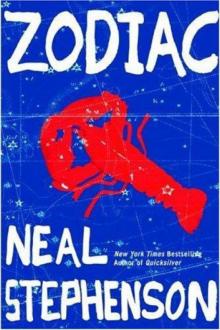 Zodiac: The Eco-Thriller
Zodiac: The Eco-Thriller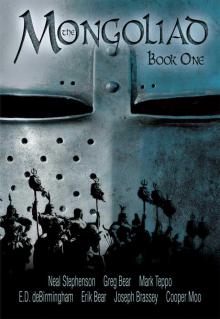 The Mongoliad: Book One
The Mongoliad: Book One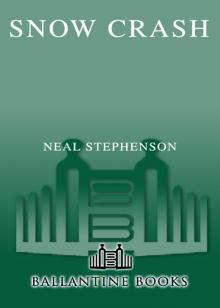 Snow Crash
Snow Crash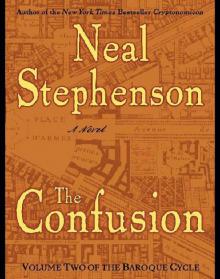 The Confusion: Volume Two of the Baroque Cycle
The Confusion: Volume Two of the Baroque Cycle The Rise and Fall of D.O.D.O.
The Rise and Fall of D.O.D.O.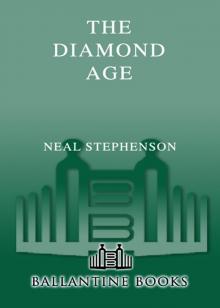 The Diamond Age: Or, a Young Lady's Illustrated Primer
The Diamond Age: Or, a Young Lady's Illustrated Primer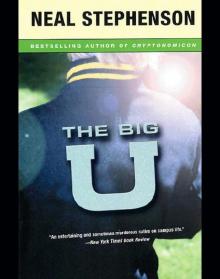 The Big U
The Big U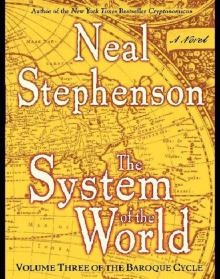 The System of the World: Volume Three of the Baroque Cycle
The System of the World: Volume Three of the Baroque Cycle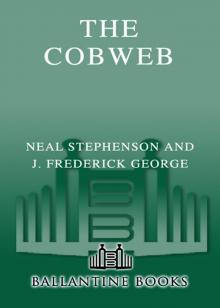 The Cobweb
The Cobweb Reamde
Reamde Fall; or, Dodge in Hell
Fall; or, Dodge in Hell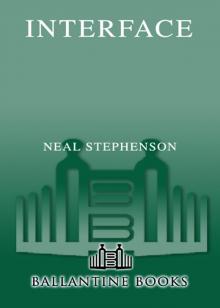 Interface
Interface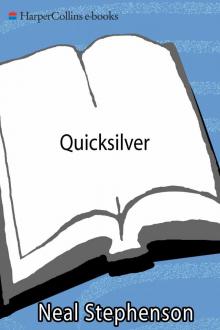 Quicksilver
Quicksilver The Mongoliad: Book Three
The Mongoliad: Book Three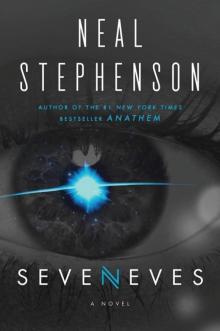 Seveneves
Seveneves Atmosphæra Incognita
Atmosphæra Incognita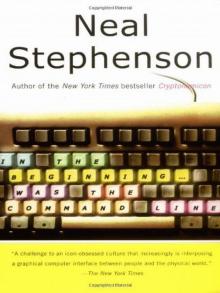 In the Beginning...Was the Command Line
In the Beginning...Was the Command Line Anathem
Anathem The Rise and Fall of D.O.D.O.: A Novel
The Rise and Fall of D.O.D.O.: A Novel The Mongoliad: Book Two
The Mongoliad: Book Two Diamond Age or a Young Lady's Illustrated Primer
Diamond Age or a Young Lady's Illustrated Primer THE System OF THE WORLD
THE System OF THE WORLD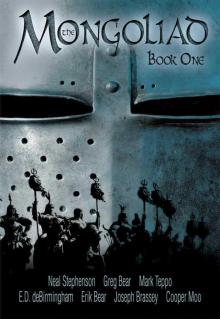 The Mongoliad: Book One tfs-1
The Mongoliad: Book One tfs-1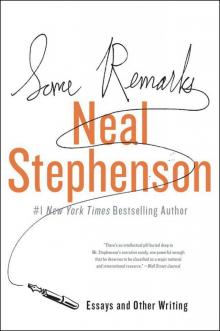 Some Remarks: Essays and Other Writing
Some Remarks: Essays and Other Writing Zodiac
Zodiac Spew
Spew The Baroque Cycle: Quicksilver, the Confusion, and the System of the World
The Baroque Cycle: Quicksilver, the Confusion, and the System of the World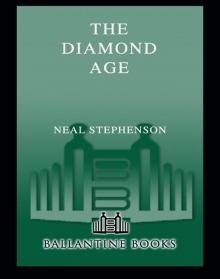 The Diamond Age
The Diamond Age Reamde: A Novel
Reamde: A Novel In the Kingdom of Mao Bell
In the Kingdom of Mao Bell Mother Earth Mother Board
Mother Earth Mother Board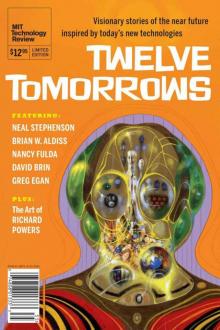 Twelve Tomorrows - Visionary stories of the near future inspired by today's technologies
Twelve Tomorrows - Visionary stories of the near future inspired by today's technologies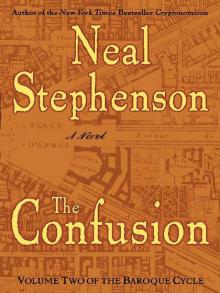 The Confusion
The Confusion The Great Simoleon Caper
The Great Simoleon Caper The Mongoliad: Book Three tfs-3
The Mongoliad: Book Three tfs-3